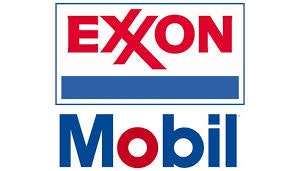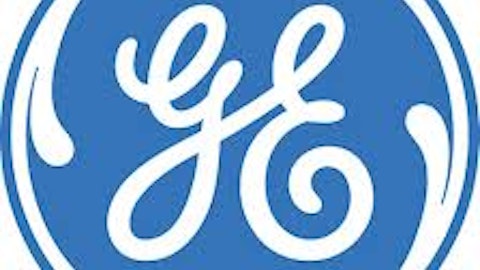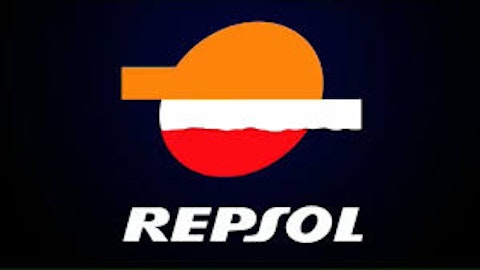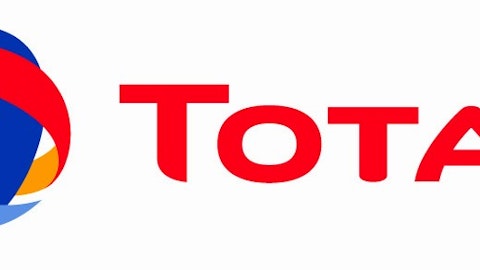It is surprising just how much more money natural gas still fetches overseas. Henry Hub selling under $4 per MMBtu, while the price of Japanese liquefied natural gas (LNG) is around $16 per MMBtu. The U.S. government is hesitant to approve LNG export facilities on American soil due to energy security concerns. The best bet to save North America from its natural gas glut is to head north, where a number of LNG projects are moving forward.
Henry Hub Natural Gas Spot Price data by YCharts
The Canadian Situation
Canada is stuck between a rock and a hard place. The boom in U.S. natural gas production has sent inventories through the roof and filled up precious pipeline space. Now, Canada is stuck exporting less natural gas into the U.S. and importing more U.S. natural gas into Canada. Major U.S. producers like Exxon Mobil Corporation (NYSE:XOM) have realized that it can improve its Canadian bottom-line by liquefying natural gas and sending it to Asia.

Building LNG export facilities is expensive, time consuming and politically complicated. These qualities form strong barriers to entry and make LNG export facilities attractive investments for long term investors.
Exxon Mobil Corporation (NYSE:XOM) and Imperial Oil Limited (USA) (NYSEMKT:IMO) recently announced that they are planning to build a LNG export facility in British Columbia (B.C.). Imperial Oil Limited (USA) (NYSEMKT:IMO) is a Canadian firm, and its market cap is less than 10% of Exxon Mobil Corporation (NYSE:XOM)’s. Imperial Oil Limited (USA) (NYSEMKT:IMO)’s journey into the LNG export market will help the company to further diversify out of the volatile North American market.
Exxon Mobil Corporation (NYSE:XOM) needs all of the growth it can find. The firm is drilling off the coast of Africa and trying to bring new fields online, but it struggles to find investments that are secure and profitable. It is in this context that Canada is an attractive option. New LNG export facilities will help to fuel Asian power plants, while Exxon Mobil Corporation (NYSE:XOM) continues to look at Arctic exploration. After being kicked out of Venezuela, it is not hard to see why a stable nation like Canada is an attractive investment location.
Don’t Forget Kitimat
Chevron Corporation (NYSE:CVX) and Apache Corporation (NYSE:APA) paved the way for Canadian LNG projects when they recently announced agreements with First Nation’s groups to build a pipeline to bring natural gas from Alberta to B.C. For Chevron Corporation (NYSE:CVX)’s LNG project to go forward, pleasing First Nation’s groups is critical. They hold political sway in B.C. and their support helps to allay environmental fears.
Now, Chevron Corporation (NYSE:CVX)’s and Apache Corporation (NYSE:APA)’s LNG project is facing more competition from Exxon Mobil Corporation (NYSE:XOM) and Imperial Oil Limited (USA) (NYSEMKT:IMO), but it should not be overestimated. LNG facilities are complicated and few are likely to be built on North America’s western coast.
The Financials
Building an LNG export facility is not cheap. Chevron Corporation (NYSE:CVX) is facing a price tag over $40 billion for a facility in Australia. The Chevron-Apache deal in Canada is clearly designed to take advantage of Chevron’s expansive balance sheet. The company has a market cap of around $250 billion and a total debt to equity ratio of 0.1, while Apache has a market cap of around $30 billion and a total debt to equity ratio of 0.4.
Chevron Corporation (NYSE:CVX)’s return on investment (ROI) of 17.1% shows that the company knows how to allocate its capital, and is a strong vote of confidence for its latest LNG plans. Apache’s low ROI of 6.3% tells a different story. In an effort to refocus the firm, Apache has decided to sell assets in the Gulf of Mexico. In the long run, working with Chevron should further improve Apache Corporation (NYSE:APA)’s returns.
In the Exxon Mobil-Imperial Oil deal, Exxon Mobil is the major financial backer. It has a market cap of around $420 billion, and a clean balance sheet with a total debt to equity ratio of 0.08. The company needs to put its capital to use or its ROI of 27.3% will start falling.
Imperial Oil Limited (USA) (NYSEMKT:IMO) is much smaller than Exxon Mobil Corporation (NYSE:XOM) with a market cap of around $35 billion and a total debt to equity ratio of 0.23. Its ROI of 18.0% places it in a better standing than Apache. It is important to remember that Imperial Oil is making a wise diversification move by increasing its access to the Asian markets.
Conclusion
Canadian LNG export facilities are great tools for investment-starved oil majors. For investors looking for stable dividend payers, Exxon Mobil and Chevron are both good options, though it is important to consider Chevron Corporation (NYSE:CVX)’s higher yield in light of its lower ROI. Imperial Oil and Apache are both smaller plays with greater potential for capital appreciation, but Imperial Oil Limited (USA) (NYSEMKT:IMO) is a more stable firm with direct backing from Exxon Mobil.
The article LNG Is More Than a Sideshow originally appeared on Fool.com and is written by Joshua Bondy.
Joshua Bondy has no position in any stocks mentioned. The Motley Fool recommends Chevron. The Motley Fool owns shares of Apache. Joshua is a member of The Motley Fool Blog Network — entries represent the personal opinion of the blogger and are not formally edited.
Copyright © 1995 – 2013 The Motley Fool, LLC. All rights reserved. The Motley Fool has a disclosure policy.





